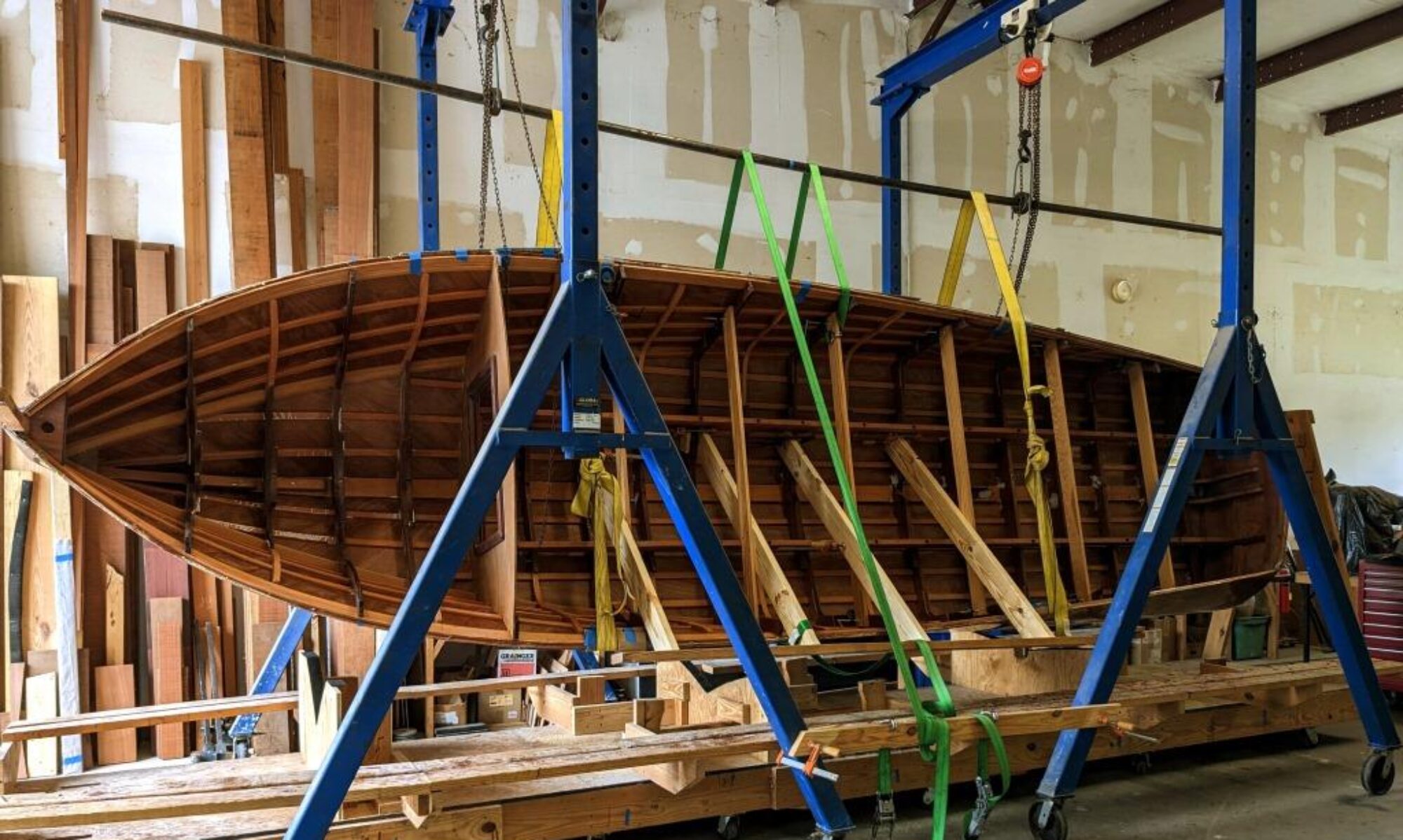
Anytime you have ferrous metal and water, you’re going to get oxidation. This oxidation causes rot in wood. In our case, the ferrous metal is the staples used to hold the upholstered “crash pad” around the perimeter of the cockpit. In the picture above you can see that the planking around the edge of the cockpit has turned black and is crumbling.
You can see the upholstered crash pad in this early post before I disassembled the boat.

There’s no way that it would hold new staples for the new upholstery we’ll order soon. Take a look at the detail picture here. So how do you go about fixing something like this? Cut out the bad and put back new! It’s really that simple. But it’s a rather involved process. I decided to make a template of the cockpit opening, and using a template guide for my trim router, I was able to cut away the rotten wood so that I had good wood to glue new pieces to.

The first step was to simply trace the exact size and shape of the cockpit opening onto some 1/8 inch plywood and cut this shape out. I had to use 2 sheets with the joint on the centerline of the boat. I cut this shape out of the plywood so I had an exact template of the cockpit opening. Next, I had to enlarge the opening in my template by 5/8 inch (the depth of the old wood that was rotten) plus another 1/8 (the offset required by my template guide).

Take a look at the picture of the router template guide here, and you’ll see what I mean. The router bit extends down through the template guide, but you have to allow for the thickness of the guide.

Then put the plywood back on the boat and route! Needless to say, you want to make sure there are no old staples or screws still in the area you’re going to cut away with the router. I managed to get all the screws out except two. The router let me know where those last two were–not fun!

Once the old rotten planking was gone, it was readily apparent that some of the support pieces, like the combing planks and corner blocks, needed to be replaced as well. Here you can see the old corner block right after the edge of the planking was routed away.

And here’s the new corner block and combing plank installed, which will support the new pieces to make a new cockpit edge. Now it’s time to make new pieces to glue to the edge of the planks. I elected to make pieces that would re-create the breaks between the planks, even though this will all be covered by the upholstered crash pad. I also used packing tape on the surfaces of the new support pieces, so the glue would not stick to them. I didn’t want all these pieces to be glued together. I’ll need to take all this apart before final installation so I can paint the inside of the boat. Also I want it to be as easy as I can make it for the guy who comes along to restore this boat the next time–50 years from now.

So here are the new edge pieces being glued in. They are just held in place with masking tape. Unlike wood glue, epoxy doesn’t need clamping pressure. You just need to make sure the pieces you’re gluing don’t move while the glue is setting.

And finally, here’s a close-up of the new plank edges after the glue has set.

And an overall view. Whew! That was a bit of work!

God is surely in the details here. Nice Job, Tim!